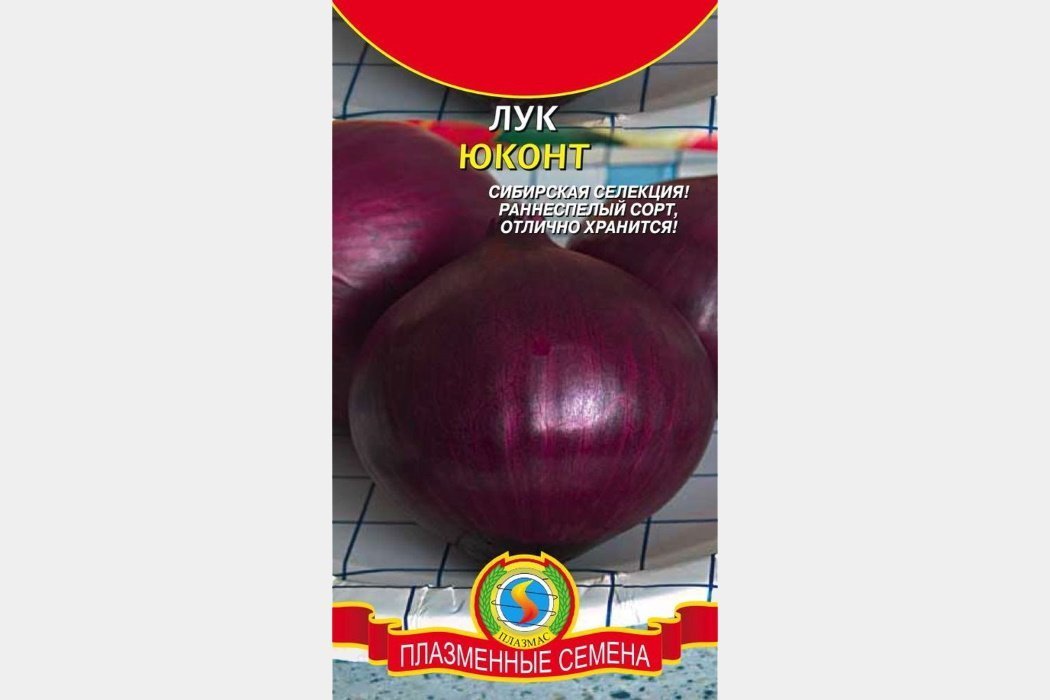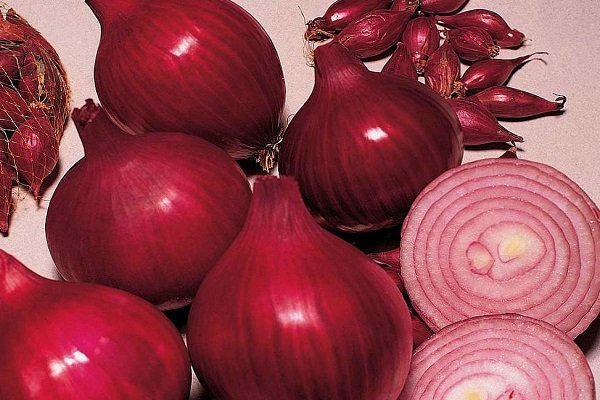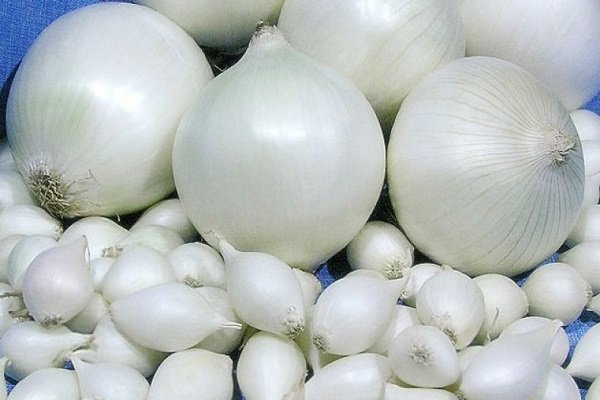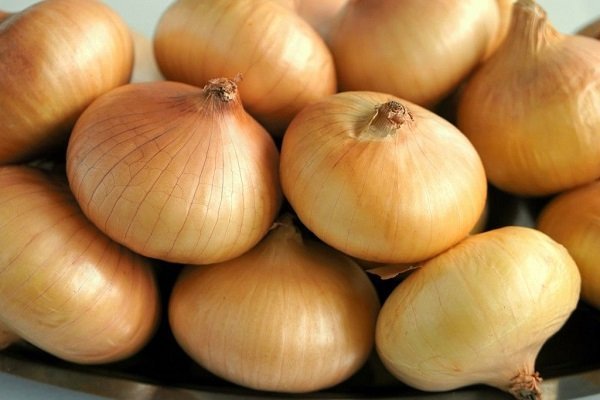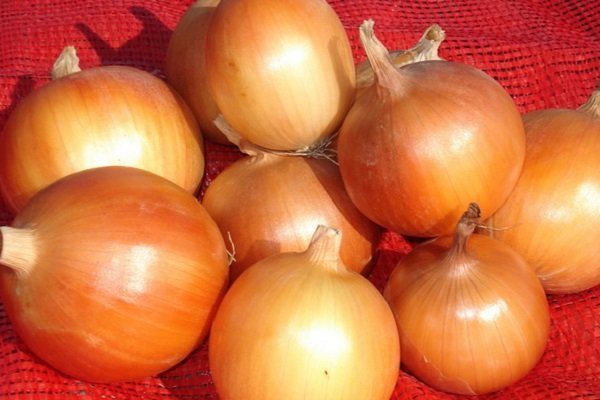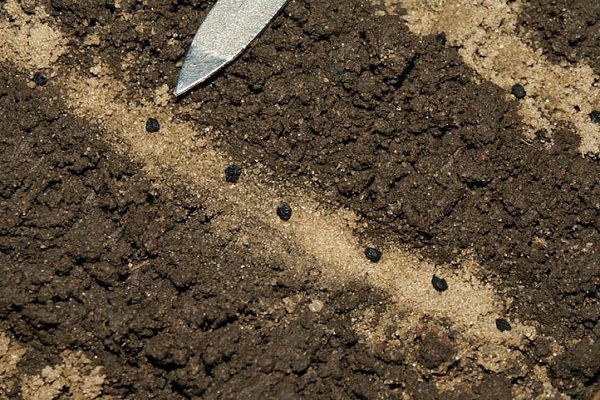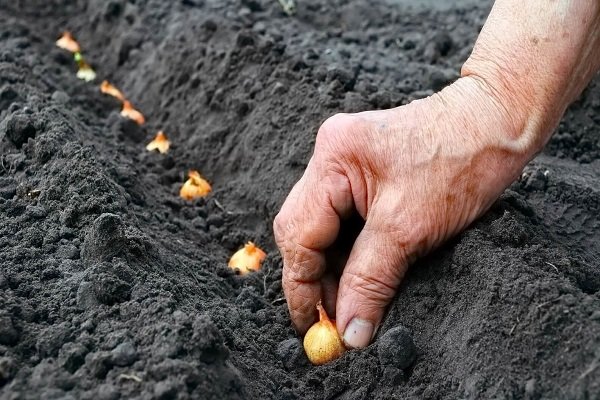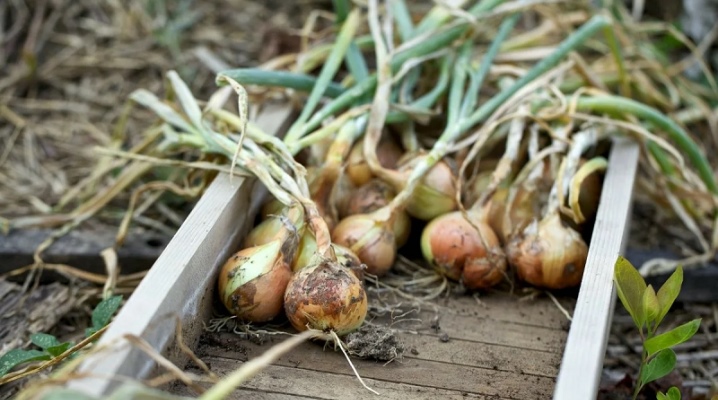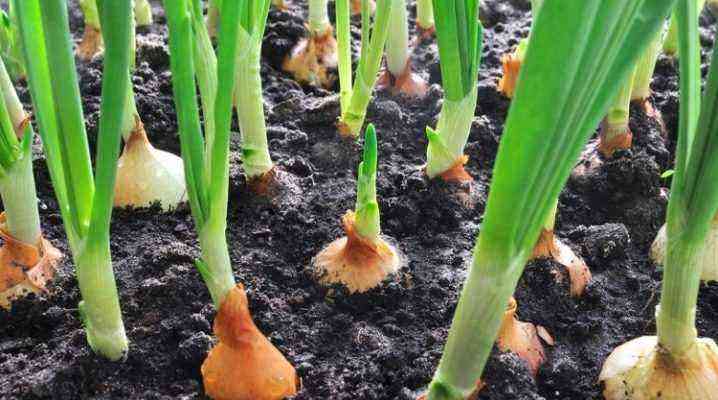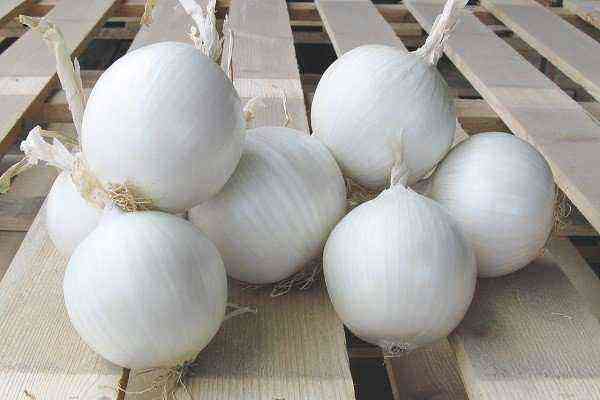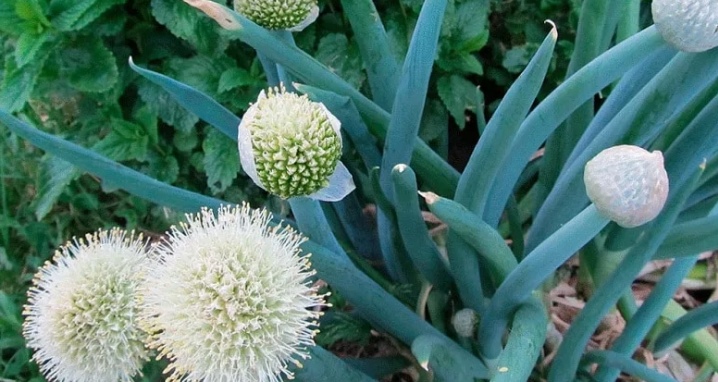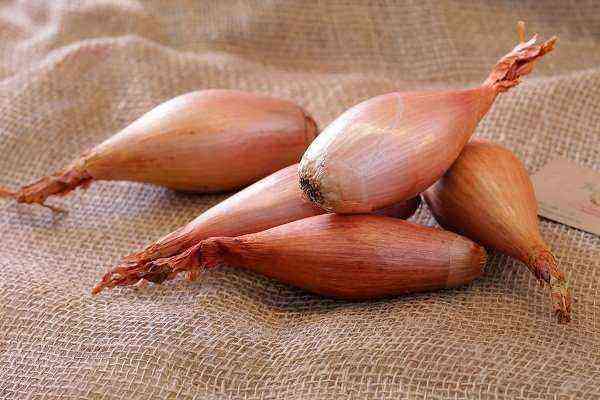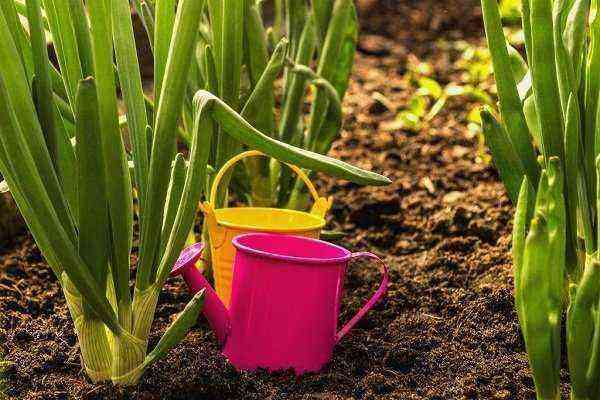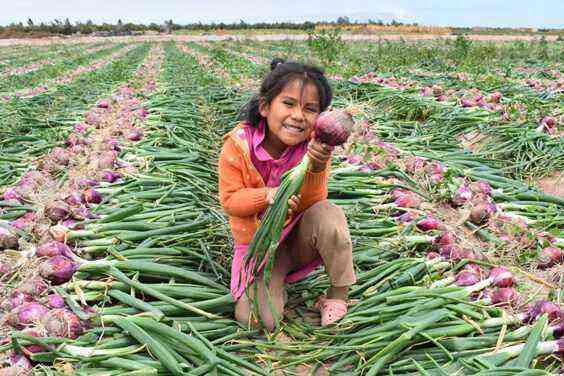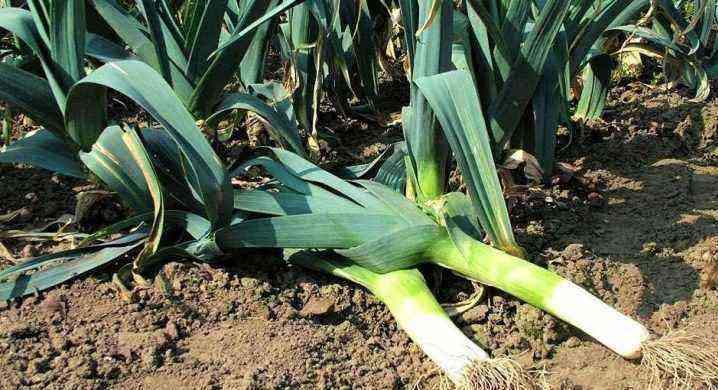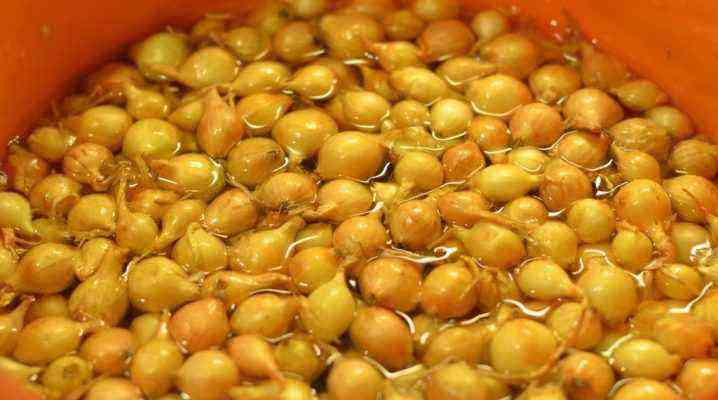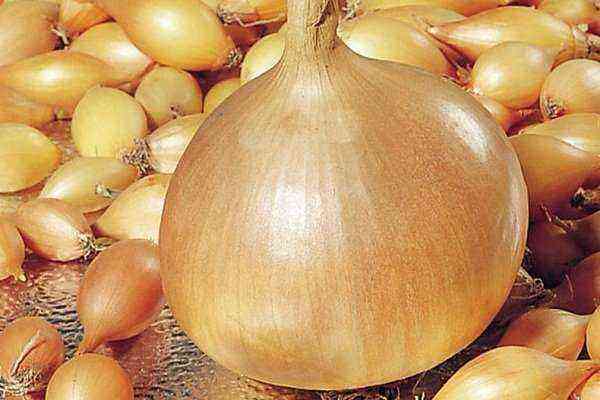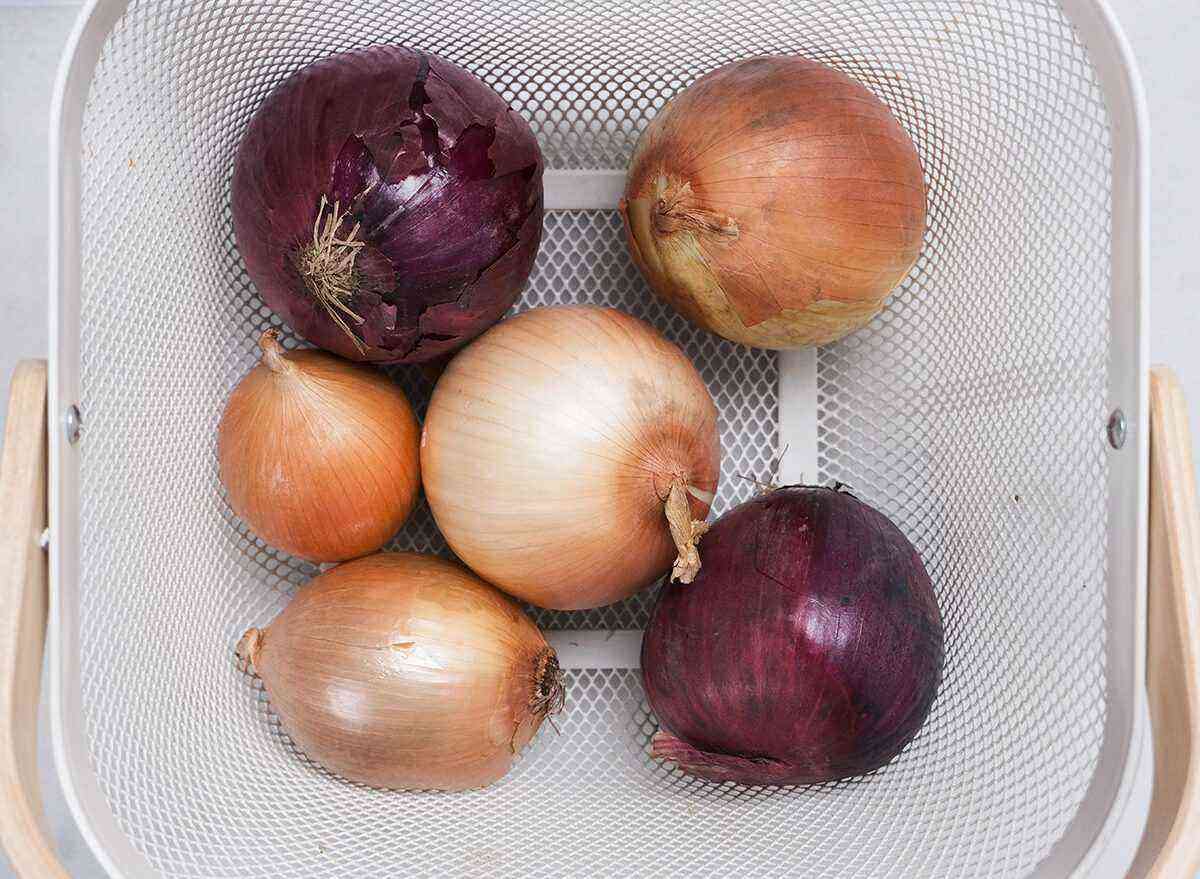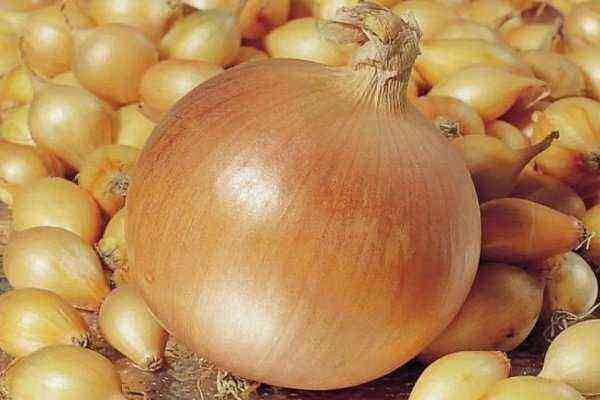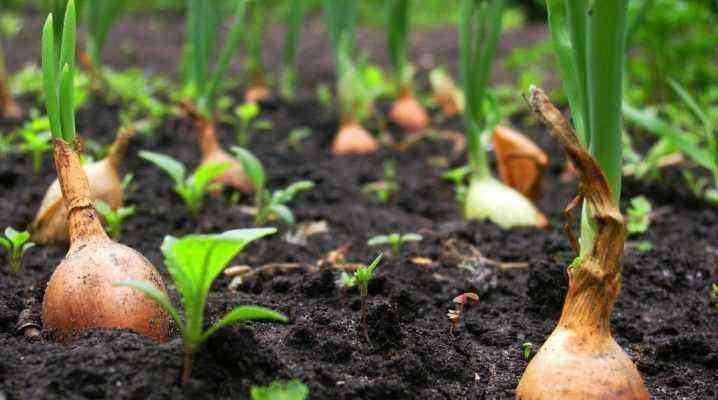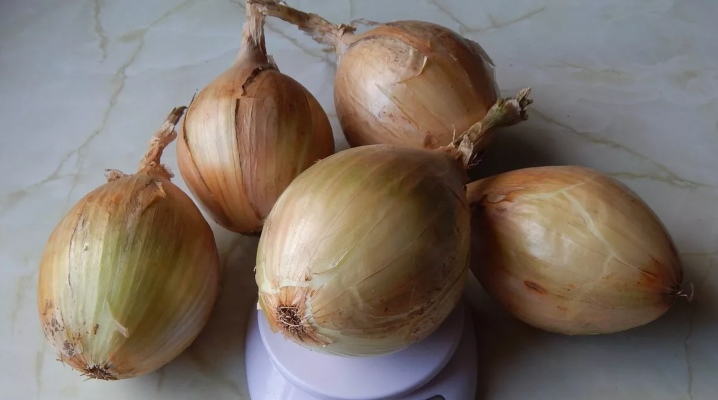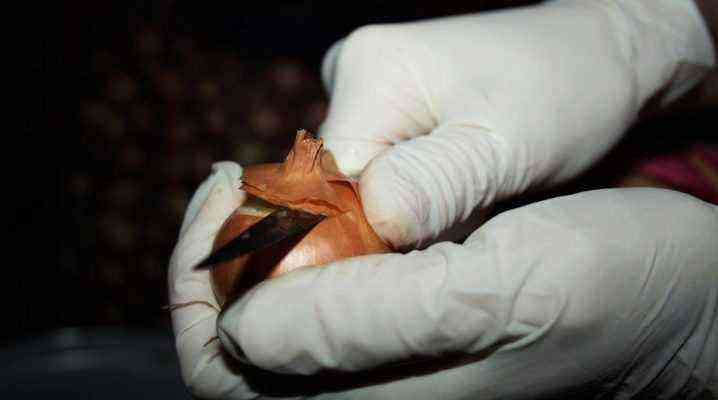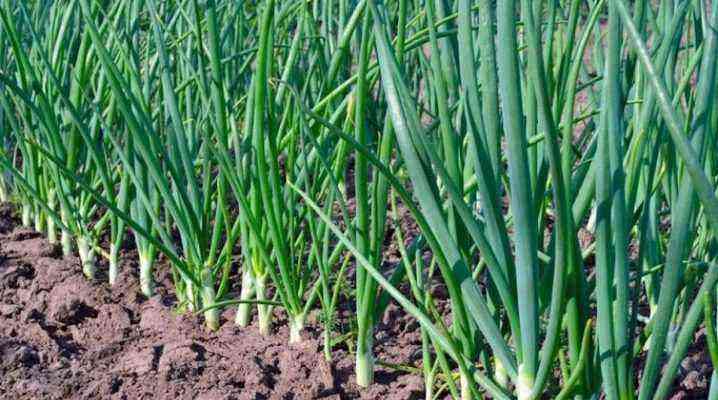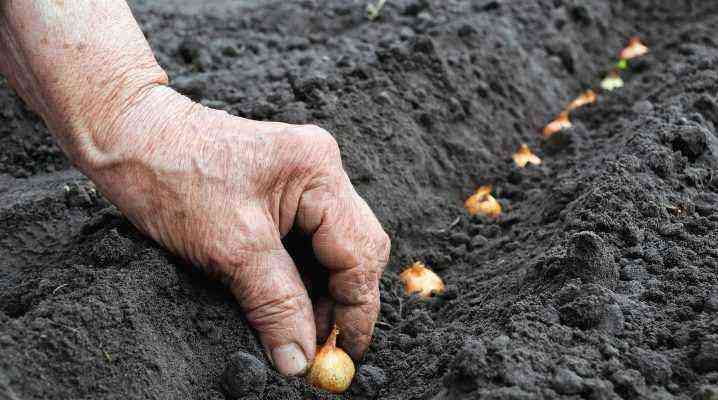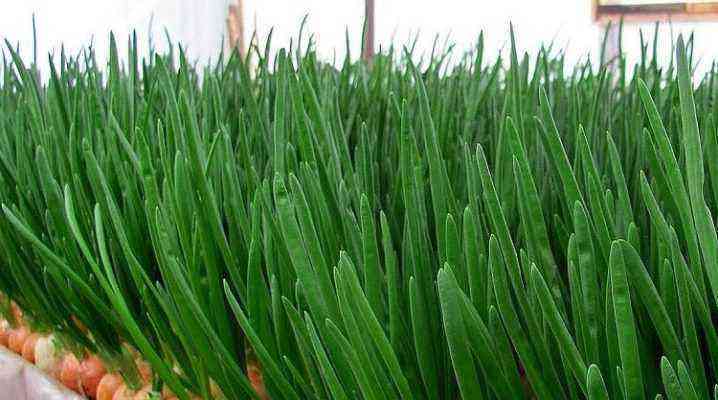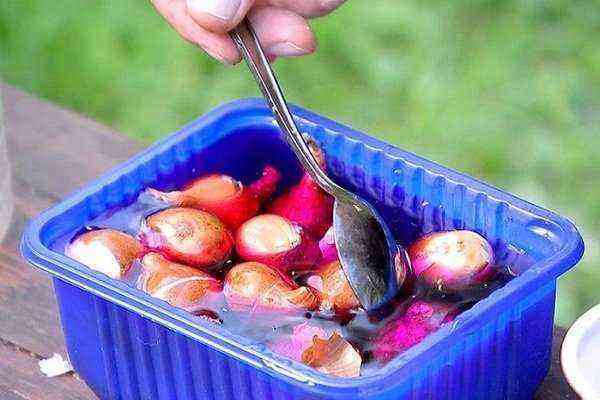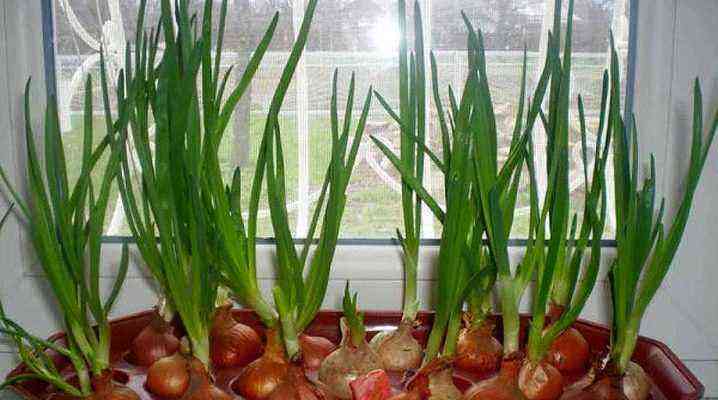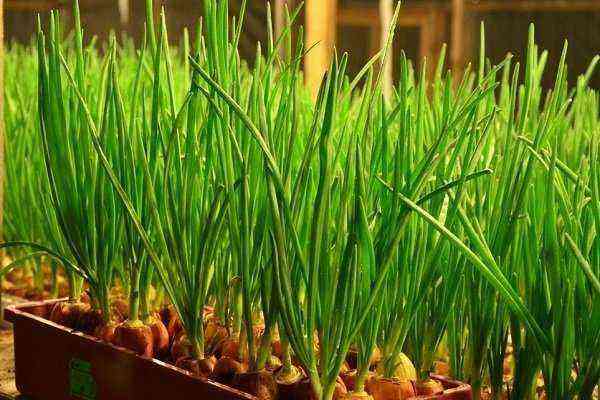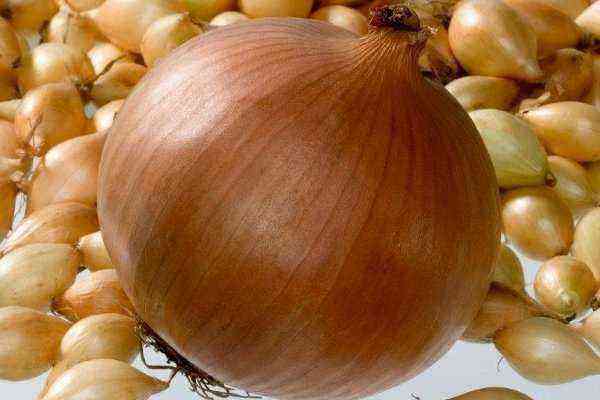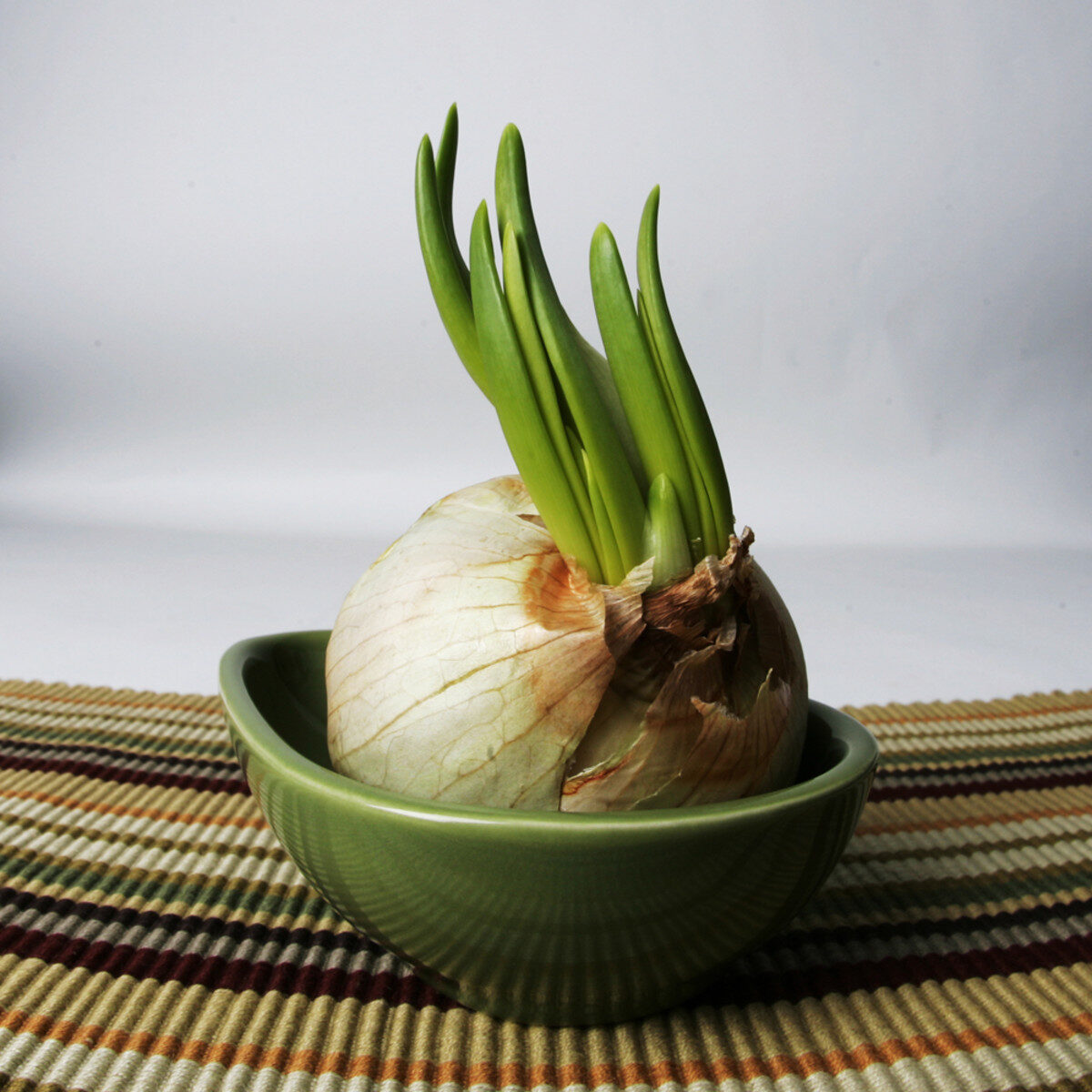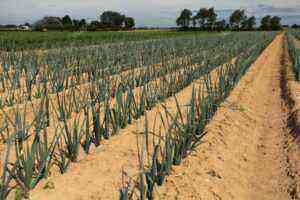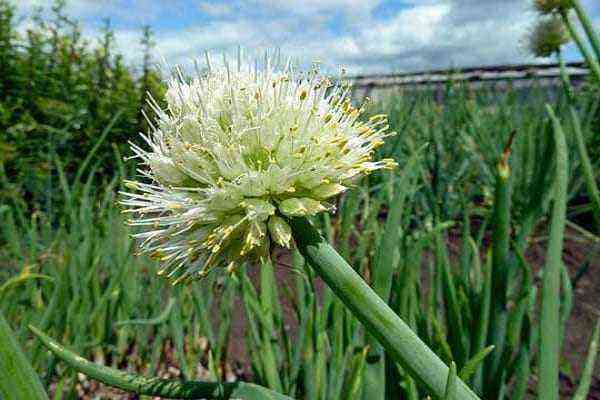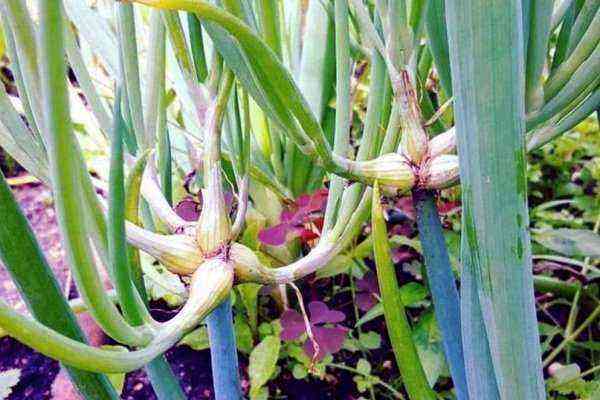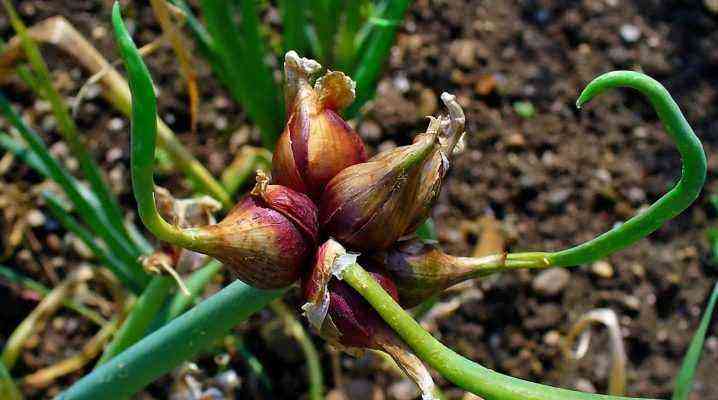Onions are one of the most popular garden crops. Under it there is a place on each site. To get a decent harvest, you need to choose the right onion variety, as well as know the basic rules for planting and caring for the plant.
The best varieties of onions
Planting a crop begins with the selection of seeds. To get an onion that has excellent taste, resistance to pests and the ability to store for a long time, you need to navigate the best plant varieties.
TOP 10 best varieties of onions:
- Yukont. This is an early maturing variety of purple onion that can be grown both from seeds and sets. The vegetable is gaining ripeness 90 days after planting in the first way and 60-70 days after the sowing is introduced into the soil. The average fruit weight is 100 g, the germination rate of the plant is excellent, equating to 95%. Onion tastes spicy.
- Carmen. It is recommended to plant this early ripe variety of white onion sets. It takes about 70-90 days until the crop is fully ripe. The fruits are round in shape, the average weight is 70 g. From 10 square meters. m you can collect about 17 kg of crop.
- Snowball. An early ripe variety of white onion that produces fleshy fruits with a semi-sharp pleasant taste. The average weight of a vegetable is 100 g. The plant ripens in 65-80 days. The crop is perfectly stored, during growth, the onion rarely goes into the arrow.
- Strigunovsky Local. An early onion variety with brown scales and light flesh. Its undoubted advantage is the ability to bring a high yield in both hot and cool climatic conditions. The taste of the fruits are excellent sharpness. The average bulb weight is 50-80 g.
- Red baron. The fruits ripen early, the flesh has a purple hue and a semi-sharp taste, the onion peel is red. To get the maximum yield, it is recommended to grow the plant by seedling method. This will allow you to collect large bulbs weighing up to 150 g.
- Setton. Mid-season variety, which is stored for a long time and has excellent taste properties. Setton produces a magnificent harvest. Under favorable conditions, from 10 sq. m can collect up to 50 kg of onions. The average weight of a vegetable is 150 g. The husk is yellow, and the flesh is creamy. Harvest 3 months after planting.
- Aleko. The variety is mid-season. The crop is harvested 100 days after planting. The fruits do not grow very large, their weight does not exceed 60 g. The color of the pulp is lilac, and the taste is rich. Regardless of the planting method, the yield remains consistently high at 94%. From 10 sq. m you can collect almost 20 kg of vegetables.
- Kaba. Late-ripening variety with light flesh and semi-sharp taste. The maximum bulb size is 150 g. It is preferable to grow this variety from seeds. Its disadvantage is low resistance to powdery mildew and onion fly.
- farmer. This late-ripening variety is chosen for long-term storage. Harvest can be expected no earlier than 130 days after planting the seeds. Bulbs grow massive. The weight of one fruit can reach 250-350 g. The flesh is white, with a characteristic crunch and spicy taste, the scales are brown, with a golden hue. The plant is resistant to attacks by fungal microorganisms.
- Globo. A late-ripening variety that brings a high yield. The recommended planting method is seedling. Onions require additional nourishment with minerals. Since the seedlings begin to grow in March, it is necessary to provide the onions with sufficient lighting. The pulp of the fruit is juicy, the smell is delicate.
On the site it is recommended to plant several varieties of onions at once. This rule is especially true when using new plant hybrids.
Soil requirements
Onions – the plant is not too whimsical, but only with the creation of optimal conditions will it be possible to achieve high yields. One of the requirements is the right soil.
Onions can grow on sandy and loamy soils. Seeds do not do well in clay soil, as it is too dense for them. To cope with the problem, sand must be added to the garden.
An important parameter for obtaining a good harvest is the acidity of the soil. The optimum values are pH in the range of 6,4-7,9. Acidic soil needs to be alkalized. This is done using slaked lime, chalk or dolomite flour.
If the seeds are planted in loamy soil, the fruits will grow tasty. High yields can be obtained on sandy loamy lands.
The lack of moisture in the soil negatively affects the yield. Under such conditions, the plants grow poorly, the fruits are small. It is necessary to actively moisten the soil at an early stage in the development of the crop, as well as during the formation of fruits. After they mature, watering is reduced. It is important not to overdo it with water, as its excess will lead to a delay in the growth period. Spears are poorly stored and more often exposed to various diseases.
The site must be chosen so that it receives as much sunlight as possible. Culture, regardless of the variety chosen, does not develop well in the shade.
The soil on which such plants were previously grown is optimal:
- cucumbers;
- zucchini;
- tomatoes;
- beans;
- potatoes.
Any other greenery is considered an excellent neighbor for onions: dill, lettuce, parsley. “Friends” culture with beets and carrots. Onions do not draw all the resources out of the soil, so next year other light-loving plants can be planted in the same area.
Terms of planting
Most gardeners plant onions outdoors in May. At this time, the soil has sufficient moisture. Such conditions are considered optimal for the fastest growth of bulbs. The exact dates depend on the climatic conditions prevailing in a particular area.
Be sure to pay attention to the weather on the day of the planned landing. If it is cool outside the window, and the air is saturated with moisture, then it is better to wait a little with the introduction of seeds into the soil. Soil temperature should be at least 12-15 degrees. Planting the plant in cold ground will result in a poor harvest and an abundance of arrowheads.
Many gardeners are guided not only by weather conditions, but also by the lunar calendar. The dates in it change, depending on the year.
In winter, onions are planted in October or early November. It is important that a month remains before the onset of severe frosts. For example, in the Urals, plants are planted in winter at the end of September, and in the south – in mid-November. From the moment of planting to the rooting of the plant takes about 14 days. The optimum air temperature is 5 degrees. Even if, after adding the seeds to the soil, a feather of 1 or 2 cm in size appears, you should not worry. Such plants tolerate wintering well.
Planting methods in open ground
Onions are planted in open ground in three ways:
- seeds;
- seedlings;
- sevkom.
Each method has certain features that must be considered in order to obtain a good harvest.
Seeds
Before you put the seeds in the ground, you need to make sure they germinate. To do this, several seeds are placed in a damp cloth and cleaned in a warm place. If after a few days sprouts appear, then you can start introducing them into the soil.
Seeds purchased at the store do not need additional processing. If they were grown on their own, then they are additionally disinfected with fungicides. A weak solution of potassium permanganate has good antiseptic properties. In it, the seeds are soaked for 24 hours. To increase their germination, they are kept in hot water for half an hour and another 30 minutes in aloe juice. After such treatment, the seeds are placed for 3-4 days in a cloth bag and immersed in water for 1,5 days. During this time, the fluid must be changed at least 3 times.
Prepared seeds are poured onto a damp cloth, covering them with a second layer of cloth. After 2 days, they will begin to emerge, after which you can start planting.
Seeds are introduced into the soil in a tape way, the earth is previously loosened. The distance between the seeds should be at least 1,5 cm. The grooves must be compacted by removing the remaining air. The soil is mulched with peat, after which it is carefully watered so as not to erode the bed. To create optimal conditions for seed germination, the bed is covered with polyethylene. Remove the film after emergence.
Seedlings
Seedlings are sown in March or late February. Features of its processing before entering into open soil:
- seed disinfection with potassium permanganate;
- activation in boiled water;
- planting seeds in boxes;
- seedling care: regular watering and top dressing, fertilizers are applied 2 weeks after germination.
You can plant plants in open ground after at least 3 leaves appear on them. So that the bulbs easily come out of the boxes, they need to be filled with water. Seedlings are taken out of the primary soil carefully so as not to damage future root crops. If there are roots longer than 4 cm, they are cut off.
Step-by-step instructions for planting onion seedlings in open beds:
- The bed is watered with hot water, leveled and covered with polyethylene.
- After 3 days, furrows are made in the prepared soil. The distance between rows should be at least 20 cm. If the fruits are large, then the gap is increased to 3 cm.
- Seedlings are introduced into the holes every 10 cm.
- The plant is deepened into the soil by 2,5 cm. To remove voids, the soil is pressed around the roots.
- So that the onion is not spoiled by frost, it is covered with a suitable material at night.
- The first days you need to water the onions regularly, every 2 days.
- After 3 days, the soil is loosened. Perform manipulations as carefully as possible so as not to damage the root system of the plant.
Under all conditions, seedlings will quickly grow.
Onion sets
Before planting sevka in open soil, you need to properly prepare it. To do this, perform the following steps:
- soak the sevok in a weak solution of potassium permanganate;
- the bulbs are dried at a temperature of 20 degrees, the drying time is 20 minutes;
- the sevok is heated for 10 hours at a temperature of 40 degrees;
- if desired, the seeds are treated with a growth stimulator.
Sets are planted in even rows, the distance between them should be 25 cm. The bulbs are brought into the ground to a depth of 4 cm. The indentation of the seeds from each other is equal to 5-10 cm. It can be increased if an onion variety with large root crops is planted. When the whole set is in the garden, it is mulched with peat. With proper planting, seedlings can be expected in 10 days.
Care culture
After planting is completed, it is necessary to properly care for onions. To do this, the soil is regularly weeded from weeds, the plant is watered, fed, thinned out if necessary.
If the soil is moist, then the first full watering is carried out after 2 weeks. When it is dry, water is applied earlier than 10 days later. The soil should remain moist and loose. This is very important at the initial stage of onion growth. The frequency of watering depends on the amount of seasonal rains. In June, watering is stopped.
Thinning must be carried out when planting onions with seeds or when making bunches of seedlings. It is important to perform these manipulations on time, until the plant has more than 4 leaves. If you thin out the crop later, the crop will be small.
During the growing season, 2 top dressings are performed. The first time fertilizers are applied in May, using organic matter for this. The second time feeding is carried out in mid-June. Phosphate-potassium compounds are better suited for this purpose.
Onions love organic fertilizers. They are necessarily used on soils with insufficient fertility, but experienced gardeners do not recommend bringing fresh manure into the ground.
Diseases and pests
Onions are affected by various diseases, they are attacked by pests that can completely destroy the crop. To prevent this from happening, the fight against them must begin as early as possible.
The most common diseases and pests of onions:
- Mučnistaâ rosa. Rainy summers contribute to its spread. The fungus leads to the loss of plant viability. To combat infection, the beds are treated with special agents such as Baikal EM. Seedlings are disinfected in a solution of potassium permanganate. To reduce the likelihood of the spread of the disease, you need to leave enough space between the seeds. If it has already affected the plants, then such means of control as Fitosporin, Trichodermin, Phytocid M are used. At an early stage of development of powdery mildew, it can be dealt with with a decoction of garlic. To prepare it, 600 g of plant heads are boiled in 10 liters of water for 3 hours. The finished composition is diluted and the beds are treated with it for a week.
- Gray mold. The disease affects the cervical part of the plant, negatively affects the shelf life of the crop. To prevent it in June, onions are sprayed with fungicides from the triazole class.
- Rust. Attacks onion leaves. To combat the disease, it is sprayed with compounds containing copper oxychloride. After processing, the leaves become unsuitable for food.
- Lukovaâ flies. This pest leads to the cessation of plant growth, its yellowing and death. Insect larvae eat the bulb from the inside. To combat parasites, folk remedies with a pronounced odor are used. Ammonia and ammonia have proven themselves well. To prepare the composition, 3 tablespoons of the selected agent are diluted in 10 liters of water. Gently water the plants with this solution, avoiding falling on its leaves.
Pests and diseases do not always affect onions. Sometimes the culture remains absolutely healthy throughout the entire period of growth. This means that all the rules for planting and care have been observed.
Harvesting and storage of crops
Onion harvesting begins in August or September. The maturity of the plant is indicated by yellowed leaves, which are held on a thin neck. The color of the husk becomes bright and saturated. You need to dig heads out of the ground in dry sunny weather.
From loose soil, plants are easily removed by hand. Heavy soil is dug up with a pitchfork or a shovel. After removing the heads, you need to clean them from the ground with your hands. Choose a sunny place to dry. The bulbs are laid out in rows, turning all the leaves in one direction. The harvest is folded on a cloth, it is not left on the ground.
It is convenient to dry the onion in bunches by tying its leaves and hanging them in a draft. The average drying time is 14 days.
Before putting the bow into storage, it must be carefully examined, weeding out defective heads. The roots are cut without damaging the bottom of the plant. Harvest is placed in baskets or boxes that allow air to pass through. Plastic bags must not be used. Optimal storage conditions for onions:
- air temperature – from -3 to -1 degrees;
- air humidity – 70-80%.
From time to time, plants need to be sorted out, sorting out spoiled fruits.
For information on how to properly harvest and store onions, see the following video:
If you correctly approach the choice of seeds, correctly determine the place for planting onions and carefully care for the plant in the future, the harvest will certainly please with its abundance. With proper care, you can eat onions grown in your area until late spring.
